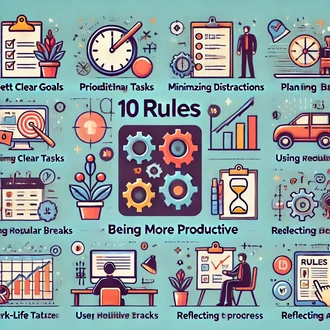Transcription Working in your business vs for your business
In today's world of work, there are a variety of work arrangements that go beyond the traditional full-time office job. From remote work to freelance work to flexible work, each modality has its advantages and challenges in terms of productivity.
In this session, we will explore the different work modalities and provide strategies for choosing the right one and maximizing our productivity in each.
Traditional office work
Traditional office work involves working in a designated physical space, usually from 9 to 5. This mode provides a defined structure and routine, which can be beneficial for some people.
To maximize productivity in this environment, it is important to establish an effective work schedule, organize the workspace ergonomically, and minimize distractions. Also, take advantage of opportunities for collaboration and direct communication with your colleagues to foster efficiency and teamwork.
Remote work
Remote work has become increasingly popular, especially with advances in technology and online connectivity. Working from home or any location offers flexibility and autonomy, but also presents challenges in terms of self-discipline and separation between work and personal life.
To be productive in remote work, establish a daily routine, create a dedicated workspace and minimize distractions in your environment. Also, establish clear boundaries between work and personal life, and take advantage of communication and collaboration technology tools to maintain an effective connection with your team.
Freelance work
Freelance work involves working independently and autonomously, offering specific services or skills to different clients or companies. Flexibility is one of the main advantages of this modality, but it can also require greater self-management and organization.
To maximize productivity as a freelancer, set clear goals and priorities, manage your time effectively and set a fair rate for your work. In addition, maintain good communication with your clients and look for networking opportunities to expand your professional network.
Flexible work
Flexible work combines elements of office and remote work, allowing employees to have some flexibility in terms of work hours and locations. This can be beneficial for those seeking a work-life balance, but requires good time management and clear communication with the team. To be productive in a flexible work environment, set up a flexible schedule that suits your needs and responsibilities, and use online collaboration tools to maintain effective communication with your colleagues.
Distributed teamwork
Distributed teamwork involves collaborating with colleagues located in different geographic locations. This modality is becoming increasingly common in a globalized world, but it requires effective communication and coordination to ensure productivity.
To maximize efficiency in a distributed team, use online communication tools, establish regular meetings to align on goals and tasks, and cultivate an environment of trust and collaboration. Also, understand and respect your team's cultural and scheduling differences to promote harmonious collaboration.
Adaptability and self-assessment
Regardless of the work modality you choose, adaptability and self-assessment are critical to maintaining productivity. Regularly evaluate your work methods and look for opportunities for improvement.
Adjust your approach and strategies according to the changing needs of the job and your environment. Stay current with tools and technologies relevant to your field and take advantage of learning and professional development opportunities.
work business




